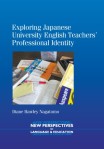We recently published Transcending Self and Other Through Akogare [Desire] by Chisato Nonaka. In this post Chisato talks about the need to get the discussion moving on Japan’s internationalization.
 A whirlwind of events have taken place since my recent move (back) to Japan. Settling into a new job, finding a new apartment, meeting new colleagues and students (and remembering their names!), etc. but above all, I’m experiencing a serious case of reverse culture shock on a daily basis. So much so that I’ve started to wonder if I’ll ever “recover.”
A whirlwind of events have taken place since my recent move (back) to Japan. Settling into a new job, finding a new apartment, meeting new colleagues and students (and remembering their names!), etc. but above all, I’m experiencing a serious case of reverse culture shock on a daily basis. So much so that I’ve started to wonder if I’ll ever “recover.”
For instance, I stand out like a sore thumb at high-level meetings, full of male directors and professors—mostly middle-aged and well into their careers. These meetings follow the agenda to a T and few express support for or opposition to the speaker.
Why do we hold a meeting if nobody really discusses anything? I asked a senior professor point-blank (capitalizing on my “naïve” and “relatively young” “female” positionality). The answer I received from him was shocking – “because there is no reason why we shouldn’t hold a meeting.” This response in fact provides a clue to understanding the complex nature of Japan’s internationalization.

In my upcoming book (Transcending Self and Other Through Akogare [Desire]: The English Language and Internationalization of Higher Education in Japan), I focus on Japanese higher education and its ongoing internationalization efforts. While I don’t necessarily take up the above case in my book, I show that the apathetic and strait-laced attitude towards something different, new, and/or the so-called “non-Japanese” is quite telling of Japan. In other words, for the meeting attendees above, not holding periodic meetings is perhaps more troubling than sitting through them. This may sound all too familiar to those who have done research and/or worked in the field of higher education within and outside of Japan.

What is unique about my book, however, is that I showcase multiple versions of “Japan” that we need to acknowledge and honor, in order to finally get the discussion moving. Specifically, through the construct of akogare [desire], I demonstrate that Japan’s internationalization is more than what the statistics and bar graphs can show. It is more than just the range of internationalization policies and programs that the government is advancing. It is in fact “us”—educators, students, and others who may not even be living in Japan—that are responsible and accountable for (re)imagining what Japan is and where Japan is headed in the coming years. It is my sincerest hope that educators and students in similar circumstances will find a meaningful and constructive connection to my work, and in turn, I look forward to engaging in a further dialogue with fellow educators and students.
Chisato Nonaka
 For more information about this book please see our website. If you found this interesting, you might also like Language Learning, Gender and Desire by Kimie Takahashi.
For more information about this book please see our website. If you found this interesting, you might also like Language Learning, Gender and Desire by Kimie Takahashi.



















